
by biomed | Nov 4, 2016 | News
During his fifteen years as chancellor, Dr. Ralph Snyderman helped create new paradigms for academic medicine while guiding the Duke University Medical Center through periods of great challenge and transformation. Under his leadership, the medical center became internationally known for its innovations in medicine, including the creation of the Duke University Health System—which became a model for integrated health care delivery—and the development of personalized health care based on a rational and compassionate model of care. In A Chancellor’s Tale Snyderman reflects on his role in developing and instituting these changes.
Beginning his faculty career at Duke in 1972, Dr. Snyderman made major contributions to inflammation research while leading the Division of Rheumatology and Immunology. When he became chancellor in 1989, he learned that Duke’s medical center required bold new capabilities to survive the advent of managed care and HMOs. The need to change spurred creativity, but it also generated strong resistance.
Among his many achievements, Dr. Snyderman led ambitious institutional growth in research and clinical care, broadened clinical research and collaborations between academics and industry, and spurred the fields of integrative and personalized medicine. Snyderman describes how he immersed himself in all aspects of Duke’s medical enterprise as evidenced by his exercise in “following the sheet” from the patient’s room to the laundry facilities and back, which allowed him to meet staff throughout the hospital. Upon discovering that temperatures in the laundry facilities were over 110 degrees he had air conditioning installed. He also implemented programs to help employees gain needed skills to advance. Snyderman discusses the necessity for strategic planning, fund-raising, and media relations and the relationship between the medical center and Duke University. He concludes with advice for current and future academic medical center administrators.
The fascinating story of Snyderman’s career shines a bright light on the importance of leadership, organization, planning, and innovation in a medical and academic environment while highlighting the systemic changes in academic medicine and American health care over the last half century. A Chancellor’s Tale will be required reading for those interested in academic medicine, health care, administrative and leadership positions, and the history of Duke University.
Dr. Snyderman joined the Alliance Board of Directors in 2012 and has served as a member of the sub-committee on Strategic Planning/Vision. In May of 2015 he was the keynote speaker at the inaugural Lasker Lessons in Leadership, a lecture series which is a collaborative effort between the Albert and Mary Lasker Foundation, the Alliance, and the NIH Oxford-Cambridge Scholars Program. Dr. Snyderman takes a personal interest in the research conducted by the scholars and has attended the annual Scientific Research Colloquium and spearheaded Mentoring Days for student in the NIH OxCam program. He is Chancellor Emeritus, Duke University, James B. Duke Professor of Medicine, and Director of the Center for Research in Personalized Health Care at the Duke University School of Medicine. He previously served as Chancellor for Health Affairs at Duke University and as the founding President and CEO of the Duke University Health System; Dean of the School of Medicine at Duke University; Chair of the Association of American Medical Colleges; Senior Vice President, Medical Research and Development, Genentech, Inc.; Director, Laboratory of Immune Effector Function, Howard Hughes Medical Institute; Chief, Division of Rheumatology and Immunology at Duke; and Senior Investigator, National Institutes of Health.
Dr. Snyderman has received numerous honors, including the Personalized Medicine World Conference Pioneer Award (2016), the North Carolina Life Sciences Leadership Award (2014), the Association of American Medical Colleges David E. Rogers Award (2012), the Industrial Research Institute Medalist Award (2008), the Ellis Island Medal of Honor (2003), and the CIBA-GEIGY Award for Lifetime Achievement in Inflammation Research (1992). He has authored almost 400 manuscripts and is the editor or co-editor of several books.
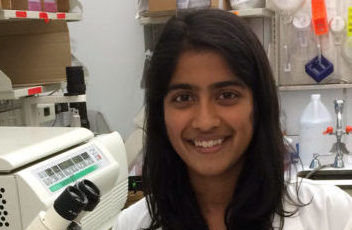
by biomed | Oct 21, 2016 | News
Since 2012, the NIH Oxford-Cambridge Scholars Program has enabled future scientists to work with NCATS researchers to explore the translation of promising new therapies for cancers and tuberculosis. Most recently, OxCam — an accelerated, individualized doctoral training program for outstanding students committed to biomedical research careers — has supported the work of three M.D./Ph.D. students in NCATS’ Division of Pre-Clinical Innovation.
Unlike traditional U.S. doctoral programs, which require two years of courses and research training prior to the start of thesis work, OxCam enables scholars to begin thesis research immediately upon starting the program. The trainees split their research time over four years with scientific mentors at NIH and at Oxford University or Cambridge University in the U.K.
NCATS mentors share their translational science expertise with the scholars, enabling them not only to focus on a specific scientific question but also to learn how to apply translation approaches to research more broadly.
“A key part of NCATS’ mission is to work collaboratively with disease and biology experts on projects designed to demonstrate ways to improve translational research processes and ultimately speed development of new treatments,” said Anton Simeonov, Ph.D., NCATS scientific director. “Mentoring OxCam students in translational science helps form collaborations between NIH and Oxford or Cambridge.”
Developing a new therapy for patients is a multistage process in which the potential therapy is translated from basic research, pre-clinical research, clinical research and clinical implementation to affect public health. As such, multidisciplinary collaborations are crucial for successful translation; no individual or organization can succeed alone. NCATS studies the science of translation to understand the scientific and operational principles underlying each step of the translational process and develops innovative approaches to make the process more efficient. One major area of collaboration at NCATS involves working with disease experts to generate chemical probes for studying human biology, focusing specifically on new therapeutic targets.
Chemical probes are small molecule compounds that can be used to increase or decrease the activity of a biological target in cells or animals. Investigators use these compounds to “probe” the function of molecules such as proteins to understand their roles in health and disease. If appropriate, probes can be optimized to become potential drug candidates. Generating these probes requires the specialized expertise and facilities that NCATS can provide.
The OxCam program provided a new avenue for launching collaborations. With their U.K. mentors and lead mentor Craig Thomas, Ph.D., who heads NCATS’ Chemistry Technology program, three students — Monica Kasbekar, Michael Gormally and Ian Goldlust — have harnessed NCATS’ assay development and high-throughput screening capabilities to identify potential new therapeutics.
For her thesis project, Kasbekar set out to develop a small molecule to probe the metabolism of Mycobacterium tuberculosis, the bacterium that causes tuberculosis, a potentially life-threatening infectious lung disease. In her lab at Cambridge, under the mentorship of biological chemist Chris Abell, FRS, FMedSci, Kasbekar developed an assay to look for the activity of an enzyme called fumarate hydratase, which is involved in the bacterium’s metabolism. She then took the assay to Thomas’ lab to find an inhibitor to block fumarate hydratase. Kasbekar used NCATS’ robotic technology to perform high-throughput screens of a library containing more than 400,000 small molecules.
Unexpectedly, Kasbekar found an inhibitor that was selective for the bacterial version of fumarate hydratase but not the human version. The compound’s selective nature makes it an ideal tuberculosis drug candidate because it would be unlikely to cause toxic side effects in patients. Kasbekar published the results of this work in the July 5, 2016, issue of the Proceedings of the National Academy of Sciences (link is external).
“The OxCam program enabled me to leverage the differing expertise of the Cambridge and NCATS labs to approach problems from different angles, which ultimately led to this discovery,” Kasbekar explained.
The same year that Kasbekar began her work at Cambridge, Goldlust arrived at NCATS to perform high-throughput screens for potential ovarian cancer drugs, using the NCATS Pharmaceutical Collection and the Mechanism Interrogation PlatE (MIPE) library of approved and investigational drugs. Goldlust was searching for agents that could kill ovarian tumor spheroids, tiny clusters of cancer cells that often remain and spread (metastasize) throughout the body after surgical removal of an ovarian tumor.
The screens identified a possible match called elesclomol, a drug originally developed to treat metastatic skin cancer. GoldIust brought the compound to his Cambridge lab and worked with cancer research physician and mentor James Brenton, FRS, FMedSci, to determine the mechanisms by which elesclomol kills ovarian cancer spheroids.
Goldlust noted that these discoveries might not have been possible in a traditional training program. “The OxCam program provides a level of independence that many scientists do not achieve until they are assistant professors,” he said. “We were given almost unlimited access to the resources we needed to answer questions that interested us. That freedom was indispensable.”
Gormally used the OxCam learning environment to explore an even broader research objective: He wanted to find a drug to block FOXM1, a protein that is overactive in many types of cancer. At Cambridge, under the mentorship of biological chemist Shankar Balasubramanian, FRS, FMedSci, Gormally designed an assay to test for FOXM1 activity. Then he brought the assay to NCATS to run a high-throughput screen of a library of more than 54,000 drug-like small molecules.
The experiment yielded several promising inhibitors of FOXM1. Gormally returned to Cambridge and continued to study and characterize the compounds, ultimately generating new insights into how FOXM1 and similar proteins work in cancer cells. He published the results in the Nov. 12, 2014, issue of Nature Communications (link is external).
“NCATS’ resources for high-throughput screening are second to none, and the automation and robotics enabled me to perform many more experiments than would have been possible otherwise,” Gormally said. “And, the training from the OxCam program provided excellent preparation for leading my own research lab in the future.”
All three students currently are finishing their Ph.D. work and will start medical school in fall 2016 to complete the second portion of their doctoral programs. Each anticipates establishing a clinically focused research career, through which they can continue the drug discovery efforts they began in the OxCam program. Meanwhile, their former Ph.D. labs will continue to pursue the therapeutic leads these students uncovered.
“These three students perfectly exemplify what the NIH OxCam Scholars Program aims to produce: young, ambitious and independent investigators who have achieved a high-quality, impactful and collaborative research experience — one they can take with them wherever they go next,” said Rick Fairhurst, M.D., Ph.D., director of the NIH M.D./Ph.D. Partnership Training Program. “I have no doubt that Kasbekar, Goldlust and Gormally each will develop and trial a new therapeutic for human disease at some point in their careers.”
Participation in the OxCam program is just one of the ways that NCATS prioritizes drug discovery collaborations. The focus on training future scientists — in the OxCam program and through other NCATS efforts — provides the nation with a pipeline of promising translational investigators. These critical thinkers will have the skills, experience and knowledge to transform groundbreaking basic research discoveries into therapeutic innovations that benefit more patients more quickly.
”The students who qualify for the OxCam program are remarkable,” Thomas added. “It has been a great experience for NCATS, largely due to their combined efforts and talents.”
(The article was published as a Featured Story on the News and Events page of the National Center for the Advancing Translational Science, August 2016, at https://ncats.nih.gov/pubs/features/oxcam-scholars)
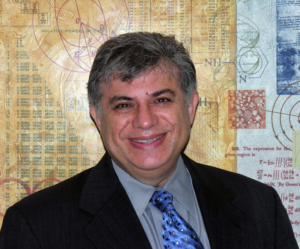
by biomed | Oct 6, 2016 | News
The International Biomedical Research Alliance announced that Jeffrey I. Auerbach, PhD, is joining the Alliance’s board of directors. Dr. Auerbach is the founder and managing member of AuerbachSchrot LLC, an intellectual property (IP) law firm based in Rockville, Maryland.
“The International Biomedical Research Alliance is always looking for new ways to support the NIH Oxford-Cambridge scholars and broaden their postgraduate medical research training. By partnering with Dr. Auerbach, who has 30 years’ experience in patent licensing, and has provided counsel for some of the most complex biotechnology cases, we will help increase their knowledge of this important arena,” said Stephen M. McLean, chairman of the Alliance Board of Directors. “We are delighted that Dr. Auerbach has agreed to join our Board.”
“This is a wonderful opportunity to help mentor the next generation of medical researchers who are going to shape the future of healthcare,” said Dr. Auerbach. “As a medical researcher and a patent lawyer, I understand many of the questions and challenges that these scholars face and have the experience to be able to provide practical, tangible guidance.”
Dr. Auerbach prepares and litigates bioinformatics, diagnostics, genetics, microbiology, molecular biology and therapeutic patent applications. He is also an expert in protecting global patent rights. Furthermore, he has patents of his own for vaccine production and isothermal “rolling circle” nucleic acid amplification.
He is also an entrepreneur. Dr. Auerbach founded Replicon, Inc., a biotechnology company that used rolling circle amplification in diagnostics, genomics and therapeutics, in 1994 and served as its president for almost eight years until it was acquired by Biokit SA. He then founded DC Associates, LLC, a company that licensed nucleic acid amplification technologies, and was its president for more than a decade.
Dr. Auerbach has an MPhil and a PhD in molecular biophysics and biochemistry from Yale University. He also has a JD from the National Law Center of George Washington University.
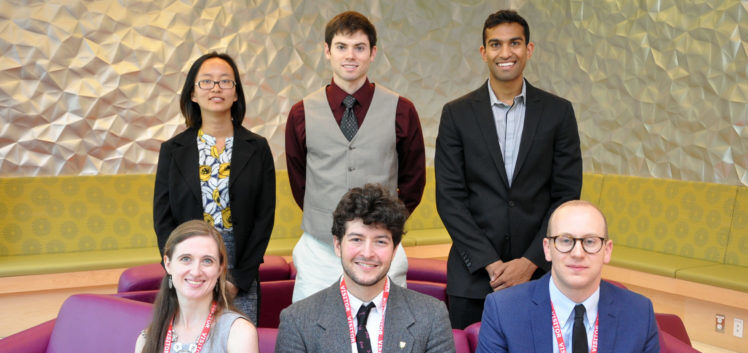
by biomed | Oct 5, 2016 | News
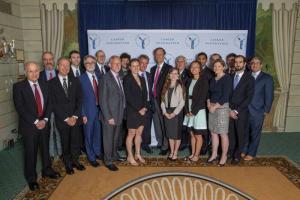 Once again this September, the International Biomedical Research Alliance was fortunate enough to host six students in the NIH Oxford-Cambridge Scholars Program for a visit to the New York area to meet with science icons.
Once again this September, the International Biomedical Research Alliance was fortunate enough to host six students in the NIH Oxford-Cambridge Scholars Program for a visit to the New York area to meet with science icons.
The trip began on Wednesday, September 21st with a meeting at the newly-opened (August 2016) Roy and Diana Vagelos Education Center at Columbia University Medical Center with P. Roy Vagelos, M.D. Dr. Vagelos is the Chairman of the Board of Regeneron Pharmaceuticals and the retired Board Chairman and Chief Executive Officer of Merck & Co., as well as Board Member Emeritus of the Alliance.
In a conference room within the 14-story glass tower with sweeping views of the Hudson River, Dr. Vagelos related the story of his career – from his humble beginnings and early ambitions to help care for people, to his research at the NIH, in academia, and finally to his rise at Merck, all the while putting humanity at the forefront of his work. Dr. Vagelos played a pivotal role in 1987 in committing Merck to donate Mectizan – as much as needed for as long as need – with the goal to help in eliminating river blindness. Today, the Mectizan Donation Program is the longest-running, disease-specific drug donation program of its kind and has been foundational in the growth of a number of other drug donation programs. The program reaches more than 250 million people in affected areas annually, with more than 2 billion treatments donated since 1987. NIH Oxford-Cambridge Scholar Huayu Ding noted, “I was most impressed by Dr. Vagelos, both in meeting him in person as well as in hearing stories about him from people at Regeneron. He had a clear vision of how science and drug discovery should be carried out and strong principles about how to run a company to help people. In addition, he had an excellent sense of humor.”
The following morning, the scholars traveled to Tarrytown, New York for a day-long visit to the campus of Regeneron Pharmaceuticals. George Yancopoulos, M.D., Ph.D. Founding Scientist, President of Regeneron Laboratories and Chief Scientific Officer, has enthusiastically welcomed NIH Oxford-Cambridge Scholars to his company each September. The visit included an overview of the company, tour of the facilities, scientific presentations by Regeneron scientists as well as presentations made by the scholars on their research projects. NIH OxCam Scholar Joanna Cross commented, “As someone who has only been involved in academic research, it was helpful to have first-hand experience [visiting] with a bio-tech company. The profit side of industry has previously made me apprehensive about leaving academia, but I was impressed that Regeneron is still mainly science-driven. The equipment available, especially in the genetics section, was amazing.” Scholar Keval Patel remarked, “The opportunity to visit Regeneron was my first exposure to a pharmaceutical company. One thing I noticed during my visit was how proud each person we interacted with was with the work they were conducting. Dr. Yancopoulos is a great role model for many of us starting our biomedical science careers, and it was inspiring to see his enthusiasm for science, even at this stage in his career, during our presentations.”
Later that evening, the Scholars were the guests of honor at a cocktail reception held in the home of Alliance board member Ann W. Jackson. Guests included individuals representing science, business, academia, private industry, philanthropy, the Lasker Foundation, and New York City area alumni of the program.
The following morning, the group attended the Breakfast at Lasker – an intimate gathering of the 2016 Lasker laureates, the NIH Oxford-Cambridge Scholars, the Lasker Clinical Research Scholars, winners of the 2016 Lasker Essay Contest, and representatives of the Alliance. Moderated by Jordan Gutterman, M.D., the breakfast was a roundtable discussion where the young scientists freely posed questions to the winners in order to gain sage career and life advice. Recommendations from the laureates were constructive and priceless.
Bruce Albert (University of California, San Francisco), winner of the 2016 Lasker~Koshland Special Achievement Award in Medical Science, reminded the young trainees that the “people at this table do not ask small questions – go for big problems” as they were urged to continue to conduct their research in the face of what may often seem to be a litany of failures. “It was reassuring to hear that the Lasker winners also ran into many obstacles on their road to discovery, and their stories reiterated the point that perseverance and good science will eventually lead to success,” noted Scholar Ding.
William G. Kaelin, Jr. (Dana-Farber Cancer Institute/Harvard Medical School), co-winner of the 2016 Albert Lasker Basic Medical Research Award for his work in oxygen sensing, offered practical advice and emphasized the need for more young scientists to involve themselves in research-related social media discussions in order to advance science communication. He noted that “cancer is like having 9/11 every other day,” and the urgency and importance of research needs to be communicated to the public through all means. The laureates echoed the notion that students should not shy away from being the spokespeople for science.
Referring to the three co-winners of the 2016 Lasker~DeBakey Clinical Medical Research Award (Ralf F. W. Bartenschlager of the University of Heidelberg, Charles M. Rice, of the Rockefeller University, and Michael J. Sofia, formerly at Pharmasset; now at Arbutus Biopharma), Scholar Patel expressed that “It was amazing to meet with the people responsible for the discovery and development of the cure to a disease [Hepatitis C] that, until my second year of medical school, was a lifelong condition for those infected. As a PhD student, it was inspiring to meet successful scientists who had to overcome years of negative results with incredible persistence to make a profound discovery.”
The Scholars raised questions about interviewing for positions where they may be lacking in a specific skill. You “must learn new things on the industry side to be effective at what you do,” urged Sofia. The laureates described techniques as being “enabling but transient.” Scholar Cross added, “After listening to the Lasker winners, it inspired me to be bolder as I move forward in my career. It is both scary and exciting to leave graduate studies and decide what path I want my career to take, especially if the area lies outside my prior experience. However, the advice from the winners was to not be put off by unknown techniques but to be brave and show what I can do.”
On the topic of both the advantages and challenges of global collaborations, the laureates agreed that these collaborations are imperative and are becoming easier to manage. One of the strengths of the NIH Global Doctoral Partnerships and the NIH Oxford-Cambridge Scholars Program that the Scholars freely articulate is that negotiating their dual-mentored collaborative projects on both sides of the Atlantic better prepares them for a dynamic research career in a way that few programs can claim. Scholar Cross observed how welcome the Scholars were made to feel: “Everyone was willing to share their experiences and advice and one of the P.I.s approached me to ask my opinion on a discovery his lab had made. This experience reinforced my belief that collaboration is of the utmost importance and I was grateful for the opportunity to attend.”
The breakfast was followed by the 2016 Lasker Awards luncheon in which Dr. Claire Pomeroy, in her opening remarks, acknowledged the NIH Oxford-Cambridge Scholars Program alongside the Lasker Clinical Research Scholars. Sean Carroll, Vice President of Education at the Howard Hughes Medical Institute and professor of molecular biology, genetics, and medical genetics at the University of Wisconsin-Madison, delivered his keynote address entitled “Seeking Thrills Through Science.” For full descriptive information on the 2016 Lasker Award winners, video viewing of award overviews, and expectance speeches, please visit http://www.laskerfoundation.org/awards/.
In summing up the meetings and events hosted by Dr. Vagelos, the Alliance, Regeneron, the Albert and Mary Lasker Foundation, and the Alliance, Scholar Andrew Breglio commented, “I can’t thank everyone enough for an incredible trip to the Lasker Awards. It was a once-in-a-lifetime opportunity to meet, converse with, and learn from so many influential figures in the world of science and medicine. I think those few days help me gained some clarity in regards to my career trajectory.”

by biomed | Sep 26, 2016 | News
Certara®, the leading provider of decision support technology and consulting services for optimizing drug development and improving health outcomes, announced on Septemter 22, 2016 that the first Certara Biomedical Research Scholarship has been awarded to the National Institutes of Health (NIH) National Center for Advancing Translational Science (NCATS) on behalf of postgraduate oncology research student David Morse, MPhil, and the research he is conducting in the laboratory of Craig Thomas, PhD.
“We are delighted to support Mr. Morse’s ovarian cancer research and the NIH Oxford-Cambridge Scholars Program in which he also participates,” said Certara CEO Edmundo Muniz, MD, PhD. “At Certara, we are committed to scientific education and to leveraging modeling and simulation to develop novel therapies for cancer. This scholarship, along with our recent appointment of Adam Darwich, PhD, as the first Certara Lecturer in Precision Dosing at The University of Manchester in England, affirm our beliefs in education and innovation.”
Modeling and simulation have proven to be beneficial in determining the best dosing strategies, the potential for drug-drug interactions with multiple drug combinations, and identifying biomarkers that predict antitumor activity.
Mr. Morse is using microfluidic-based, single-cell RNA sequencing, “drop-seq,” to explore the cellular heterogeneity of ovarian cancer spheroids and reveal parts of their transcriptome that may be expressed, functional and targetable.
“These spheroids remain within patients after surgical resection of primary ovarian cancer tumors, and are thought to lead to relapse and further cancerous growths. Because of their diffuse locality within the abdomen, the most appropriate form of treatment is chemotherapy,” said Mr. Morse. “We hope to reveal the unique genomic makeup of these spheroids so that they can be effectively targeted and treated by chemotherapies.”
The American Cancer Society estimates that during 2016 about 22,280 women will receive a new diagnosis of ovarian cancer and about 14,240 women will die from the disease. Ovarian cancer ranks fifth in cancer deaths among women. A woman’s risk of getting ovarian cancer during her lifetime is about 1 in 75.
Mr. Morse’s previous research focused on the development of nanomedicines to deliver multimodal therapies to tumors. However, he discovered that the primary limitation with oncological nanomedicines is their inability to exclusively target and localize therapies to tumor sites. He believes that single-cell sequencing of cancer tumors is one of the most promising ways to advance active targeting by revealing the genomic identities of the individual tumor cells.
NIH Oxford-Cambridge Scholars join an accelerated MD/PhD program for postgraduate medical research students and typically graduate two years early. Each Ox-Cam scholar has a mentor at the NIH and another one at either the University of Oxford or Cambridge in the UK. Mr. Morse’s mentors are Dr. Craig Thomas at NCATS and Professor Tuomas Knowles in the Department of Chemistry at Cambridge University. Mr. Morse also received a 2015-16 Fulbright Scholarship and a Whitaker Fellowship to complete his MPhil in nanoscience at the University of Cambridge.
The Certara Biomedical Research Scholarship is administered by the International Biomedical Research Alliance in Bethesda, Maryland. The Alliance’s mission is to support the NIH Oxford-Cambridge Scholars Program and associated global PhD and MD/PhD training programs based in the Intramural Research Program of the NIH, America’s largest biomedical research organization. Its goal is to assure the financial viability and scientific excellence of the scholars’ program by supplementing government funding. The Alliance supports program events and scholarships designed to enrich the program and broaden the perspectives of its highly selective students as they train to become the next leaders in biomedical research.

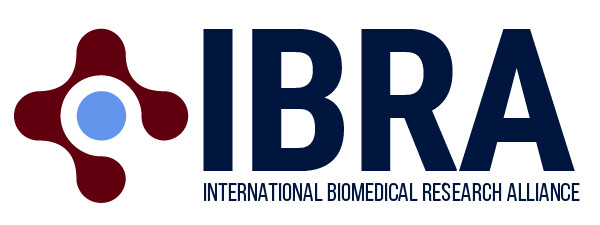



 Once again this September, the International Biomedical Research Alliance was fortunate enough to host six students in the NIH Oxford-Cambridge Scholars Program for a visit to the New York area to meet with science icons.
Once again this September, the International Biomedical Research Alliance was fortunate enough to host six students in the NIH Oxford-Cambridge Scholars Program for a visit to the New York area to meet with science icons.